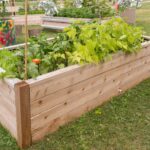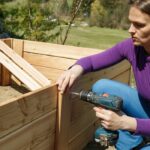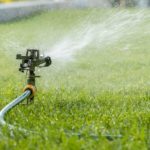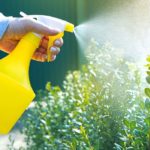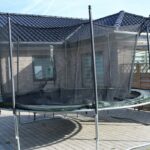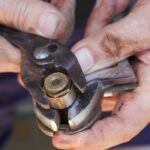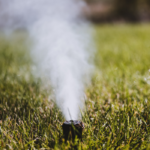With warmer weather approaching, it’s time to think about how to keep the lawn lush and healthy. A vital part of any lawn care routine is installing a quality sprinkler system. But with the many different types of sprinklers on the market, how do you find the right one for your lawn?
A lawn’s size, shape, and soil type are critical factors when choosing a sprinkler. Installation and maintenance costs should also be considered. An expensive, gear-driven sprinkler system may be necessary for a large lawn, while a simple stationary sprinkler might do the trick for a smaller area.
Installing the right sprinkler system can save you a lot of hassle and money in the long run. It will also ensure a stunning, healthy lawn that will be the envy of your neighbors. However, picking the perfect sprinkler system isn’t always easy. Let’s break down the most important factors to help choose the best sprinkler for your lawn.
How Do You Determine the Best Sprinkler for Your Lawn?
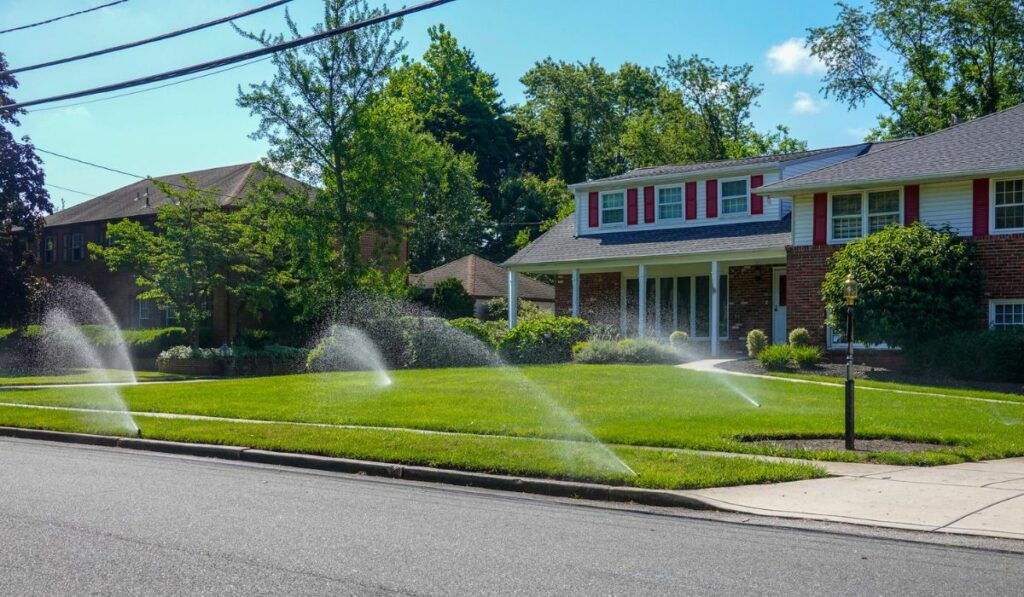
Spending hours hand-watering the lawn is obviously not the most fun option. But neither is shelling out big bucks for a top-of-the-line sprinkler system only to find out that it doesn’t quite meet your needs. So, it’s much better to do your due diligence before making a purchase.
These days, there are all sorts of sprinklers on the market, from traditional models to high-tech designs with all the bells and whistles. There is no shortage of options — but more choices can also mean more confusion.
What can be especially helpful in this situation is to have a good understanding of your lawn’s needs before you start shopping. This includes considering the specifications of your lawn (the size, shape, and type of turf), what features are most important to you (adjustable nozzle, timers, automatic shut-off, etc.), and your budget (sprinkler systems can range from a few dollars to a few hundred dollars).
Start by taking a good look at your lawn. How big is it? Is it square, rectangular, or irregular in shape? Then, consider the type of turf and climate to estimate the average watering needs. And, finally, ask yourself what type of sprinkler system would be most convenient for you. With this information in hand, you will be in a much better position to select the best sprinkler for your needs.
Factors to Consider Before Installing a Sprinkler System
Here’s a closer look at some of the factors you need to consider before buying and installing a lawn sprinkler system.
Size & Shape of The Lawn
How big is your lawn? This is an important question because a small patch of grass can be irrigated with a drip system (on Amazon) or a few soaker hoses (also on Amazon), but a large lawn will require a more robust system.
Also, pay attention to the shape of your lawn. If it’s not flat, you’ll need to account for that and get a system that can handle inclines and slopes. This is also called zoning, which means dividing your lawn into different sections and installing the appropriate type of sprinkler head in each one.
Type of Grass
Different types of grass have different watering needs. For example, Bermuda grass is drought-resistant, so you can water it occasionally and it will still look green and healthy. On the other hand, Kentucky bluegrass is a cool-season grass that requires more water to stay hydrated. A well-maintained sprinkler system is a key to achieving that.
Soil Type
Much like different grasses, different soil types have different watering needs. For example, sandy soil drains quickly and doesn’t hold onto water for long; you also need to water long enough to reach the roots. On the other hand, clay soil holds water well, and you don’t need to water as often or for as long.
Water Bill
Your sprinkler system will obviously use water, and that means your water bill will go up. But how much it goes up depends on the type of system you choose. A drip system or soaker hose doesn’t spray water into the air, which minimizes evaporation. A lawn sprinkler system sprays water into the air, and evaporation is more likely.
But sprinklers come with various nozzle types and spray patterns that can minimize evaporation. You can also get a rain sensor (on Amazon) or automatic shut-off valve to help conserve water. These points are also important if you have local water restrictions in place.
Smart Features
These days, you can find all sorts of high-tech features on lawn sprinklers. For example, some models come with WiFi connectivity so you can control them from your smartphone or tablet. Others come with rain sensors that can automatically turn off the sprinkler system when it rains.
You can also find systems with timers and app controllers that allow you to customize the watering pattern and schedule when the system comes on and goes off. These features are obviously very convenient but also come at a premium. So you have to decide if they’re worth the extra cost.
The Installation Process
Installing sprinklers means plumbing and electrical work, which isn’t too complex, but some places have stricter requirements than others. You might even need a permit from the city.
So, it’s important to do your research beforehand and find out what’s required in your area. And it’s always better to hire a professional to install your sprinkler system to avoid any problems down the road.
Operation and Maintenance
Once your sprinkler system is installed, it needs to be properly maintained to function at its best. That means regular inspections, tune-ups, and keeping an eye out for any problems. So, before committing to a sprinkler system, ensure you’ve got the necessary help available in case something goes wrong.
What Are the Most Popular Types of Lawn Sprinklers?
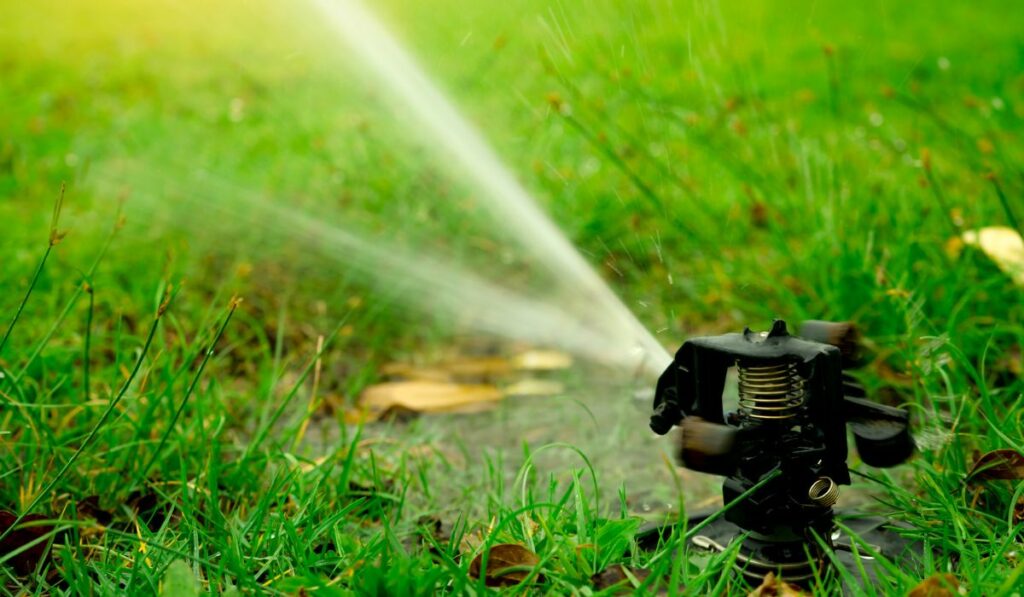
Lawn sprinklers aren’t just sprinklers anymore. Nowadays, there are all sorts of different types with various features to choose from. You can get a programmable system that rotates as much as you like or one with different spray patterns and nozzle types. Here’s a quick overview of some of the most popular types of lawn sprinklers:
1. Stationary Sprinklers
As the name suggests, stationary sprinklers don’t move. You just connect them to a hose, place them on the lawn, and turn them on. They spray in fixed patterns, mostly a circle or a rectangle. A few new models have multiple pattern options, like this one from Nelson (on Amazon), but they’re not the norm. The main advantage of stationary sprinklers is that they’re cheap. But because they don’t move, they’re not efficient in either uniformity or water coverage when compared to other types.
- Only suitable for small lawns
- Inexpensive
- Not very efficient
2. Oscillating Sprinklers
The next step up from stationary sprinklers is oscillating sprinklers (on Amazon). They have a rectangular head that oscillates back and forth, spraying water in a rectangular pattern. Oscillating sprinklers can be really powerful, with some models able to cover several hundred square feet.
They’re more efficient and fast, so there is also less water wastage. However, for the best results, you’ll need to buy a quality model as the cheaper ones can be quite flimsy.
- Cover moderate to large lawns
- More efficient in water usage
- Not ideal for non-rectangular lawns because of the fixed pattern
3. Pulsating Sprinklers
Pulsating sprinklers are a great choice for those who want to water their lawns gently and evenly. These sprinklers have a rotating head that sends out a stream of water in a pulsating motion. They also come with various nozzle attachments, which allow you to customize the watering pattern to suit your lawn.
Pulsating sprinklers, like this one from Melnor (on Amazon), are ideal for curved or uneven lawns, as the round head ensures that water is evenly distributed over the entire surface. You can also adjust the height of the sprinkler; a higher setting means gentle spray perfect for new grass or delicate plants.
- Cover large lawns, perfect for uneven surfaces
- Flexible jet settings for different needs
- May increase evaporation if used in full sun
4. Impact Sprinklers
If you want something powerful but still easy to use, then an impact sprinkler (on Amazon) is the way to go. These sprinklers have a rotating head that’s attached to a weighted base. They work by propelling the head in a circular motion, which sends out a powerful stream of water and makes a little “clunk” noise, hence the name.
Impact sprinklers are very versatile and can be used for various watering needs, from small gardens to large fields. They’re also quite durable and can last for many years with proper care. The only problem is that the jet may be too powerful for some lawns, especially new grass.
- Cover large areas
- Durable and long-lasting
- May be too powerful for some watering needs
5. Traveling Sprinklers
As the name suggests, traveling sprinklers move around your lawn on their own, watering as they go. They have a long hose that’s attached to a base unit, which contains the motor and wheels. You simply set the desired watering pattern and let it do its thing. Since they are tech-based, you can get a lot of features, such as automatic shut-off, speed spray patterns, and more.
Traveling sprinklers, like the Orbit 58322 (on Amazon), are ideal for large lawns as they can cover a lot of ground quickly and efficiently. The only downside is that they’re quite expensive, and the hoses can be a tripping hazard if you have kids or pets running around. But if you want the ultimate convenience, then a traveling sprinkler is the way to go.
- Cover large to very large lawns
- Convenient & flexible
- Can be Expensive
6. Gear-Driven Sprinklers
Gear-driven sprinklers (on Amazon) are a variation of impact sprinklers. The main difference is that they have several gears that help to rotate the head. This results in a wide coverage but also more control over the jet. With these sprinklers, you can adjust the spray pattern, distance, and flow rate.
Gear-driven sprinklers are ideal for big lawns as they can quickly cover a lot of ground. They’re also low maintenance; the body is completely sealed, so you don’t have to worry about rust or corrosion. The only downside is they’re quite expensive and may require professional installation.
- Cover big lawns
- Adjustable settings, with pattern and flow control
- Low maintenance
7. Pop-Up Sprinklers
Pop-up sprinklers are a type of impact sprinkler that’s hidden underground when not in use. They have a long tube with several heads that “pop up” when the water is turned on. Pop-up sprinklers like these from Rain Bird (on Amazon) are ideal for watering flower beds, as they can be placed close to the plants without being obtrusive.
They’re also great for lawns with obstacles, such as trees and shrubs. The only downside is that they’re not very adjustable, so you have to be careful when setting the coverage area. And they’re also way more expensive than other types of sprinklers.
- Hide underground when not in use
- Can be placed close to plants and obstacles
- More expensive than other types of sprinklers
8. Sprinkler Hose
A sprinkler hose (on Amazon) is a long, flat hose that has several holes punched in it. When the water is turned on, the holes create a spray of water that’s perfect for watering small gardens and flower beds. However, you need high water pressure for the holes to work properly. Otherwise, you’ll just get a trickle of water.
Sprinkler hoses are very cheap and easy to use, but they’re not very adjustable or durable. They’re also not very practical for large lawns.
- Perfect for small gardens and flower beds
- Not very adjustable or durable
- Don’t work well with low water pressure
What Type of Sprinkler Is Best for Big Lawns?
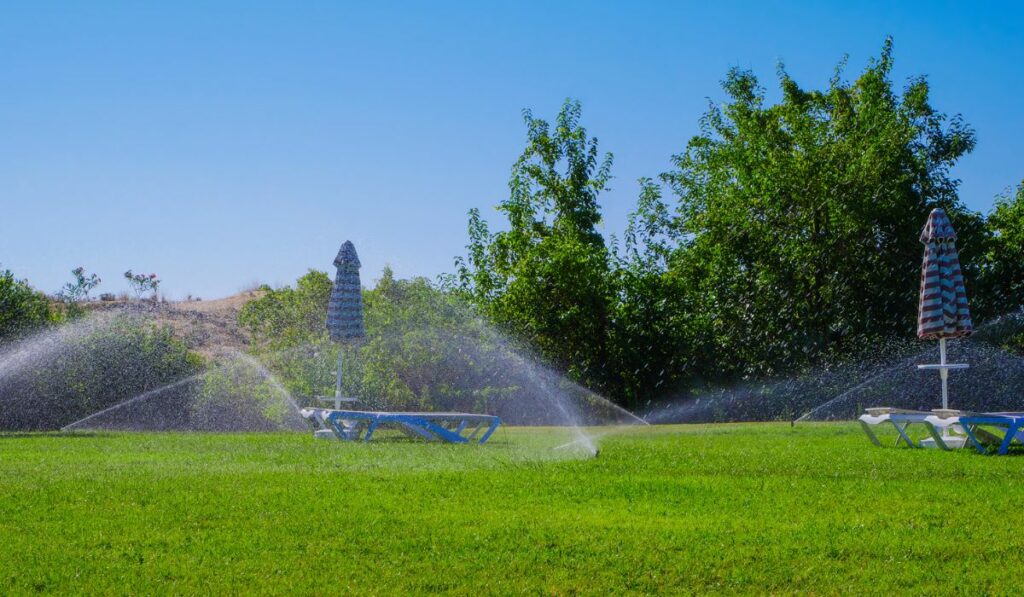
Consider two key factors when selecting a lawn sprinkler for a big lawn: Do you want a stationary or portable system, and what type of water flow do you need?
For a permanent, in-ground system, a gear-driven sprinkler is the best choice. You’ll need to dig trenches and build a supply line to connect the system to your water source, but it’ll become a convenient part of your landscaping.
A gear-driven sprinkler will also give you more control over the direction, range, and flow of the water stream. You can put different nozzles on each head to fine-tune the irrigation pattern.
For a portable system that you can set up and take down as needed, a traveling sprinkler is the best bet. They even work in big open areas where you can’t set up a traditional system.
All you’ll need is a water source, like a hose bib or hydrant, and a water supply line long enough to reach the farthest point of your lawn. Travel sprinklers are handled through mobile applications, and so these are perfect for people who are always on the go.
Travel sprinklers also come with quite a few features, like creating a custom irrigation schedule, automatic shut-off, and rain delay. Plus, you can choose the right nozzles and pressure for your lawn.
Which Sprinkler Is the Most Low Maintenance?
For most people, an oscillating sprinkler is the best low-maintenance choice. It can cover a large area, is easy to set up and take down, and doesn’t require a lot of adjusting. Plus, the water wastage is minimum.
Other options for low-maintenance sprinklers include pop-up sprinklers; once they’re set up, they don’t need much adjusting. Gear-driven sprinklers are another good choice, because their assembly is completely enclosed and there are fewer chances of debris or dirt getting in and clogging the system.
Ultimately, the best low-maintenance lawn sprinkler for you is the one that best meets your needs without a lot of hassle. This means there is no one-size-fits-all answer. The best way to find out is to consider your needs and make a decision based on what best meets those needs.


